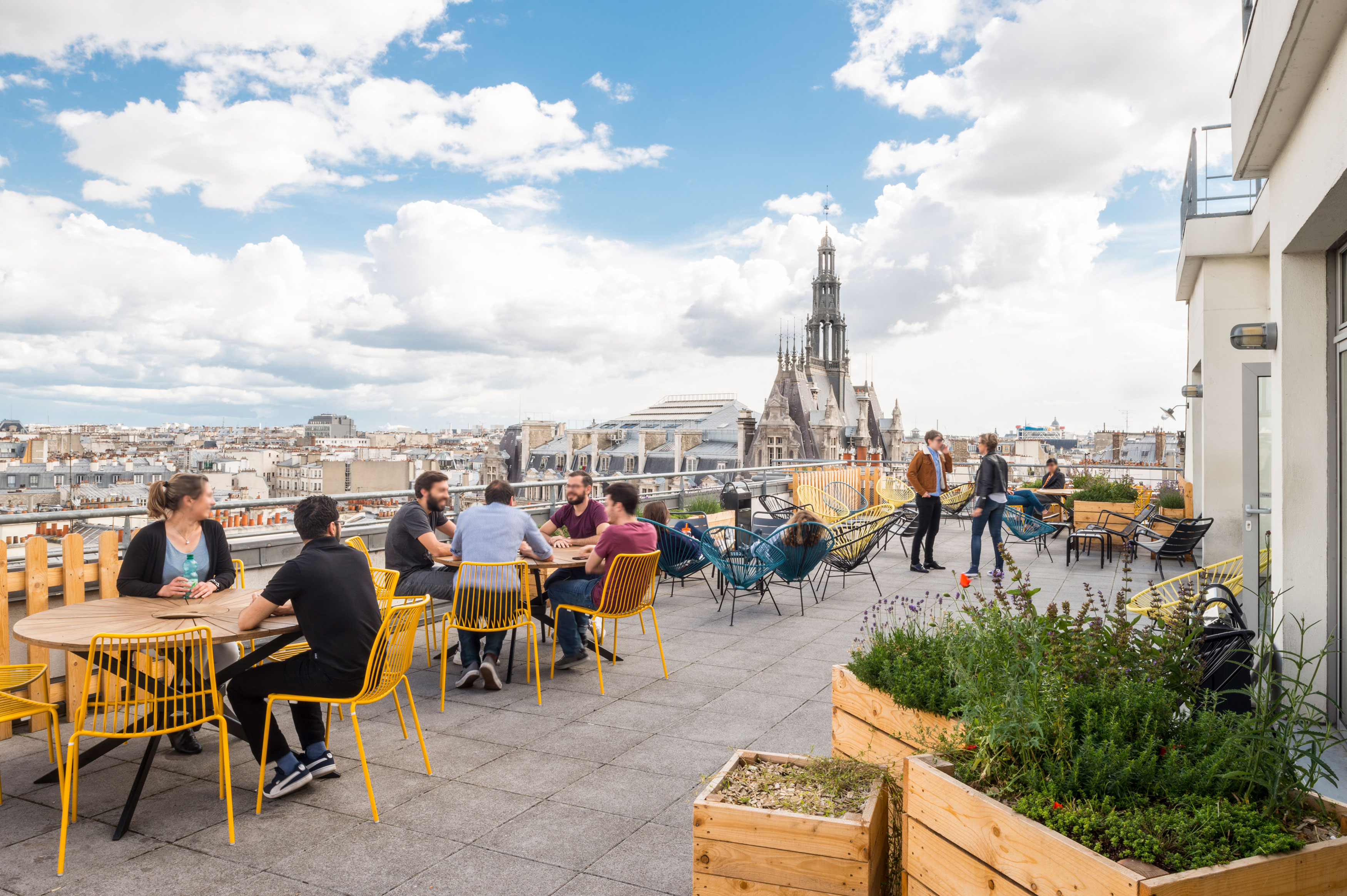Reduce, reuse, rethink

Reduce, reuse, rethink
Is it the next economical evolvement or a part of the fourth industrial revolution? Circular economy is even called a necessity if we want to survive.
The concept, which is built on reduce, reuse, repair and recycle, has no founder or date of origin. But it has gained momentum since the late 1970s, led by academics, thought-leaders, NGOs and businesses. The biggest driving force, however, is Mother Nature and how she reacts to the fact that an increasing population is draining her.
The global population will reach close to nine billion by 2030 and is expected to reach eleven billion by 2100. We all consume natural resources as if we had 1.7 planets. As we’re running out of resources the logic of circular economy is indisputable. It aims to keep products, components, and materials at their highest utility and value at all times so that waste is minimized and natural resources will be used more efficiently.
“The circular economy can support businesses”
Translating the rate in which we consume the world into a personal level means basically that you and I need to halve our consumption or start to consume with twice the intelligence… It’s either that or facing the consequences that already are upon us such as water scarcity, air pollution and natural disasters where nine out of ten are climate-related.
This is nothing new. We’ve been warned for decades about the effects of our unsustainable lifestyles. But it is not until now that new intelligent ways of consuming are emerging at high speed, primarily thanks to technical and digital innovations. 3D printing revolutionizes manufacturing by reducing waste and emissions. Blockchains enable more efficient ways of pricing and selling, clean power and machine2machine systems can monitor, control and optimize lights, heating and cooling of buildings – just to name a few.
A new business model
Some people urge business to support a circular economy, but when you think about it – it’s really the other way around. The circular economy can support businesses as we’re moving towards what many predict as an unstable global market with limited access to water and energy, scarce agricultural and mineral inputs resulting in increased prices, surcharges and taxes on emissions and waste.
Since the circular economy not only aims to ensure the survival of the planet but also the survival of businesses there are innumerous cases of companies who explore and innovate within this field. Thanks to the circular concept sustainability has become a potential for reducing costs, strong competitiveness and making money. The circular economy is a USD 4.5 trillion opportunity according to the World Business Council for Sustainable Development in their CEO Guide to the circular economy.
Going from a linear economy to a circular one is of high interest, not only among companies, but also among nations such as Finland, Scotland and Japan which are in the forefront of the sustainable roadmap. Sweden is another country which is early and active. The government has recently set up an inquiry to analyze and propose policy instruments to promote increased utilization and re-use of products in order to prevent waste and to overcome barriers in the transition to a circular economy. Some of the suggestions ahead are increased access to car pools, tax deductions for rental goods, secondhand goods and repairs and increased legal rights within secondhand trade and sharing.
And the timing is right. More and more customers are becoming environmentally aware. Reports from different countries indicate that consumers prefer sustainable brands. For instance, a survey from Blocket in Sweden shows that four out of ten Swedes choose brands that actively contribute to a sustainable society. Many actors see business opportunities in the fact that the customers are waiting for corporations to enable circular consumption. According to Sustainable Brand Insight 33 percent of the Swedish population expect companies to make it easier for consumers to buy secondhand, rent and borrow things from each other.
Consume intelligently
And here is where Schibsted plays a role. With 22 marketplaces for secondhand trade all around the world and approximately 200 million users globally, we empower consumers in their daily lives to act more environmentally friendly. Secondhand trade is an important contribution to sustainability as it avoids exploitation of natural resources, reduces waste and emissions. Let’s all agree that consuming with twice the intelligence is more likely in the nearest future than cutting back.
The heart of France

The heart of France
Set up in 2006, Leboncoin is a true online success. The marketplace has become a reflection of French society and a social phenomenon.
Leboncoin’s stats are impressive: 27 million classifieds posted and 26 million monthly unique visitors, making it the fourth most visited website in France, competing directly for audience figures with the giants of Silicon Valley (Google, Facebook and Youtube). When the team behind Leboncoin set up shop in France, it comprised all of two people, Olivier Aizac, former director, and one developer. “I was the director of…myself,” Olivier says ironically, remembering the infancy of a company which now counts more than 500 employees.
In order to recreate the Swedish website, Blocket, in the French style, they adopted a free listings model to stand out from the competition and aim for popular success by insisting on simplicity. “We didn’t want any barriers to entry,” Olivier explains and tells another story from the beginning: “Leboncoin was nearly called ‘chez Georgette’, after my grandmother, because I wanted to remind the team that we needed to come up with a website that even older people would be able to use.”
Proximity and popular appeal, then. The aim was to design a site that would appeal to every French family, and this is still the main priority today. Listings snowballed because they were free, user figures grew very quickly, and the site listed products that couldn’t be found elsewhere (ideally, local to the user) – the basis for long term success was in place. In 2008, Leboncoin.fr already had four million monthly unique visitors; in 2017, there were 26 million unique visitors in total, 37 percent of the French population. “It’s one of the rare Internet success stories to have come from the grass roots, a site with mass appeal that has spread to all social strata,” says to Antoine Jouteau, current CEO. A bottom-up revolution, as opposed to a trend imposed “by geeks, mostly ABC+ and North American” as Antoine puts it.
A social phenomenon
Leboncoin became a reflection of French society, and turned into a vast public marketplace, which the big dailies had no hesitation in calling a social phenomenon. This did not escape the notice of politicians. When the company celebrated its tenth year in business in 2016 and moved to new premises (a splendid art deco building in the heart of Paris), President François Hollande was the guest of honour.
With its enormous user base, the site holds up a mirror to French purchasing habits, in a way that sometimes gives rise to new solutions. For example, in the depths of the economic crisis, users came up with a jobs section. In 2014, the team noticed that 60,000 businesses were recruiting up to 200,000 people on an ongoing basis. Since then, a dedicated category has been created, and last year 800,000 people found a job through Leboncoin, a fact Antoine Jouteau considers to be very empowering.
“Leboncoin became a reflection of French society”
Users are Leboncoin’s lifeblood and top priority; indeed, they are the cornerstone of the site’s economic model. These days most of the revenue is generated by paid options, known as freemium content. A business plan which has proved its worth, since it has now been adopted by the site’s other international versions. “Le bon coin means ‘a great place’ and it really is a great place for users,” Antoine points out. He smiles as he recalls users complaining that they couldn’t find a “hybrid” filter in the automobile category (one of the platform’s success stories, with 7.9 million visitors per month, making it the top car sales site in France). The team reacted fast and the missing category was created within a fortnight. Vocal requests for in-app instant messaging and a way of paying for transactions on the website? The former was one of the new features for September 2017 (following seven months of work, no less), and the latter is in development for 2018.
Today, Leboncoin has become part and parcel of new consumption trends, where secondhand is a purchasing choice. According to a 2016 study, 89 percent of its users choose it in order to make more responsible purchasing decisions. For Oliver, this is clearly an essential part of its success: “We no longer live in a disposable society, people have more awareness of transactions involving other individuals, they have woken up to mindful consumption.” As a knock-on effect, the secondhand trend has a positive impact on the environment (in terms of carbon dioxide savings), but also provides access to products that people can’t necessarily afford to buy new, such as smartphones. A virtuous effect, according to Antoine, which also plays a part in the site’s success.
All in all, Leboncoin has fulfilled its original ambition by becoming a meeting place like the village bistro after which it is named, where everyone stops by for their daily shot of caffeine.

